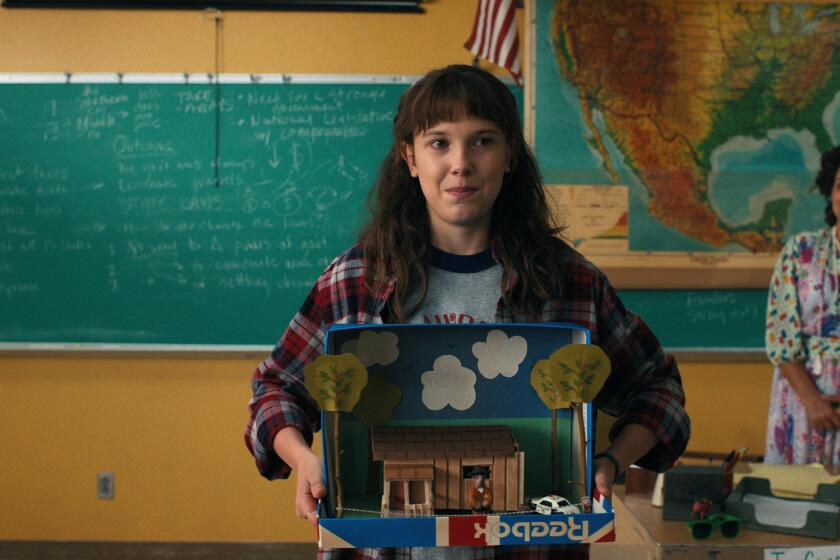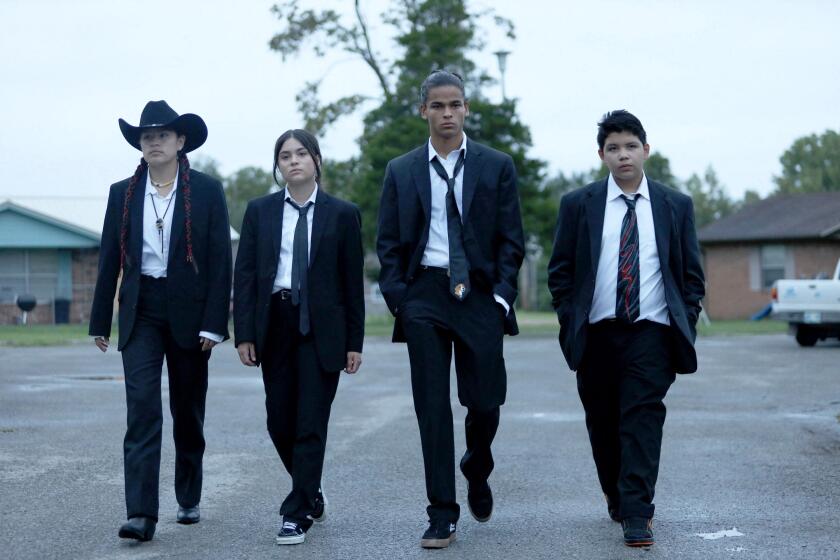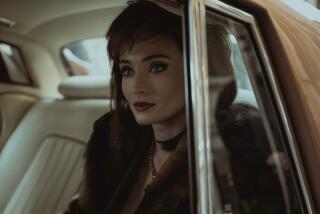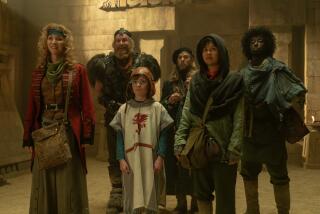Prime Videoâs new sci-fi adventure isnât the next âStranger Things.â Itâs better
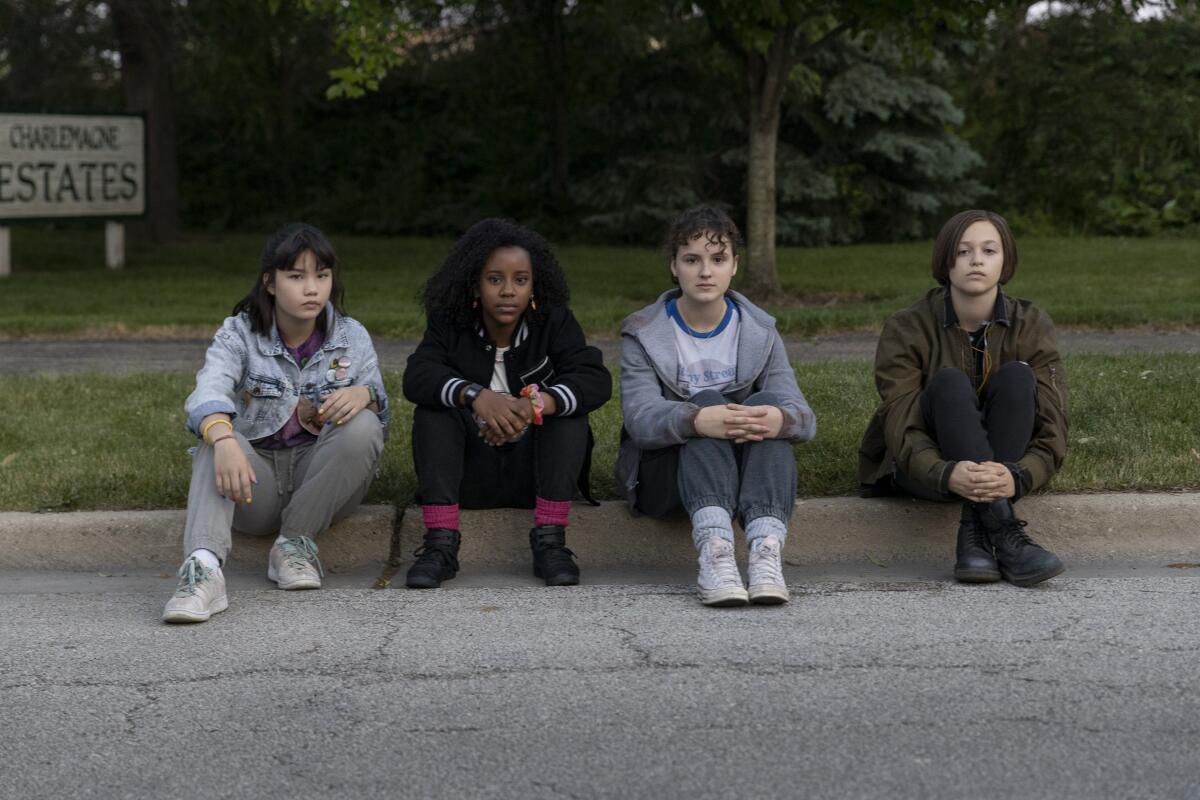
There is a lot of science fiction on television these days, and as with its theatrical big sibling, a lot of it relies on special effects and/or the built-in advantage of belonging to some extended, mutually promotional universe. Castles are built upon clichĂŠs, for reasons that can seem both purposeful and lazy; action and mythology can take precedence over character and relationships, which are often more implied than portrayed. This does seem to be a recipe for success.
That is not âPaper Girls,â which premieres Friday on Prime Video. I have no idea whether it will attract the audience it deserves, or even who exactly that audience might be. (That Prime put reviews under embargo until the release date suggests it may have doubts of its own.) Developed by Stephany Folsom from a comic by Brian K. Vaughan and Cliff Chiang, and counting âHalt and Catch Fireâsâ Christopher C. Rogers and Chris Cantwell as showrunners, it centers on a quartet of 12-year-olds. But the ideas are mature, involving identity, memory and youthful hopes coming literally face to face with adult reality, and it is more than usually subtle about loss and death. Between occasional bursts of action, the pace remains leisurely, with room for stillness; there is very little in the way of spectacle, and much of what there is shows the modesty of its budget. Still, I would rank it as one of the yearâs best shows, for what it does right and what it doesnât bother doing, for the intelligence of the writing and the natural flow of its dialogue, and the impressively deep performances of its phenomenally talented young cast â not actual 12-year-olds, but near enough.
Given that it begins in the 1980s â itâs a time-travel show, so it doesnât stay there long â and involves young people caught in the middle of science-fictional forces, the series is sure to be compared to âStranger Thingsâ; the comic already was. The sci-fi elements frame the story, create danger, draw the protagonists together and allow for encounters not possible under the laws of physics as we currently understand them.
Like all time-travel stories, itâs useless to try to make logical sense of it; and like all science fiction, it requires a certain amount of just going along for the ride. But the show is emotionally coherent, and the ratio of sci-fi set pieces to ordinary human interaction is, in any case, low; conversation and significant silences are what carry the show and set it apart from its genre kin. On the whole, its tone and group dynamics remind me more of a show like âReservation Dogsâ than âStranger Things.â
The oft-nostalgic Netflix series succeeds in Season 4 by treating adolescence as the torturous experience it is for those who donât fit in.
The series (after a brief, tense prologue) starts slowly, even poetically, as the four heroines wake up early to deliver newspapers before dawn in a fictional Cleveland suburb called Stony Stream, heading out on their bikes into the dark, empty streets. There is Mac (Sofia Rosinsky), a child of poverty who talks tough and is (though not as tough as all that); brainy Tiffany, called Tiff (Camryn Jones), with her sights set on MIT; soft-spoken KJ (Fina Strazza), who carries a hockey stick; and Erin (Riley Lai Nelet), on her first night of work, and who will be called ânew girlâ for a while. Each actress makes her own kind of music; there is nothing generic about their characters.
It is Nov. 1, 1988, Hell Day, a post-Halloween riot of pranks, vandalism and bullying, which leads the four, previously un- or barely acquainted, to band together. As in the comic, they are a diverse group; Erin is Chinese, Tiff is Black and KJ is Jewish; Mac, who is white, begins with some inherited bad ideas about Japanese people taking factory jobs and Jews having money. The series allows them time to get to know one another, which will take some work.
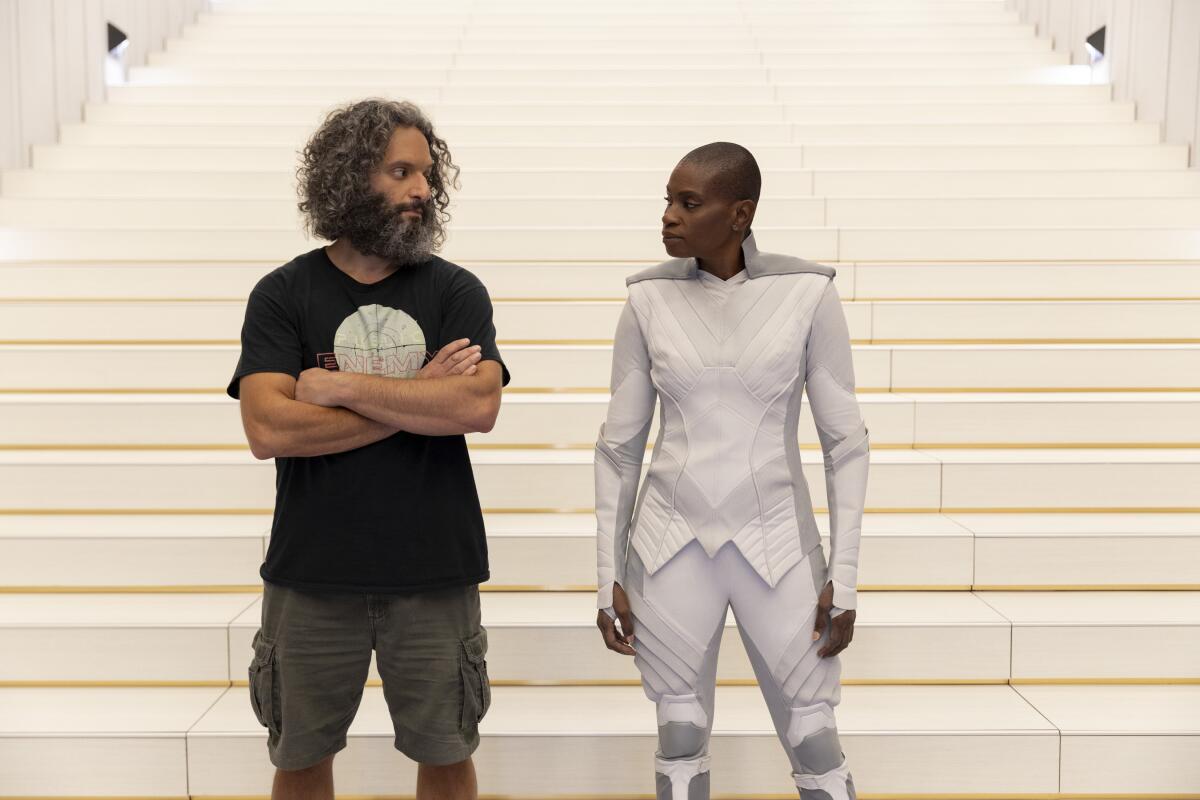
âHave you ever heard of the Holocaust?â KJ asks, after Mac goes on about her privilege.
âOh, give me a break,â Mac replies.
âAsk my grandmother sometime. Iâm sure she really enjoyed it.â
âThis isnât Nazi Germany.â
âAnd yet someone wrote âJew Bââ on my locker last year.â
âI wouldnât,â Mac says after a pause. âI wouldnât do anything like that.â
In a somewhat confusing flurry of events, they find themselves kidnapped, or perhaps rescued, by a couple of black-clad teenagers and wind up stranded in the year 2019. Their abductors/saviors will turn out to belong to the Standard Time Fighters, also called the Underground, who would be the Rebel Alliance in this scenario, who are at war with the Old Watch, your Empire stand-in; their skirmishes take place across history. As explained by Larry (Nate Corddry), a 20th century recruit whose path the girls cross, the Old Watch has banned time travel in order to maintain its privileged station in whatever far year it has come to power, while the STF wants to adjust history in the pursuit of a more equitable future for all. There is some room to doubt this account, and something in this long-running dispute we are perhaps meant to regard as a Swiftian absurdity; yet the violent behavior of the Old Watch, and the fact that it regards time travel as a capital offense, putting the girls in danger, does tend to brand it as the bad guys.
The new comedy, set on an Oklahoma reservation, uses its rich, highly specific sense of place to offer a refreshing take on contemporary teen life.
As in a Shakespeare play, the warring armies are represented by a handful of actors; running about the forest in their contrasting costumes, shooting their ray guns, they come across a bit like LARPers. But for much of the series, the Old Watch is represented by a lone, single-minded soldier (Adina Porter), who shows up in various wigs and costumes, often with an appropriate gift of food, as she tracks the girls. Eventually sheâll be joined by Jason Mantzoukas, of all people, as her superior, in a Tupac T-shirt, threatening yet comical â which makes him paradoxically more threatening.
Looking for shelter and unaware of their temporal dislocation, the girls follow Erin to her house, where she meets her future self (Ali Wong), still living there, having achieved none of young Erinâs dreams. (She imagined herself a senator and mother of four.) Each girl will encounter her own perhaps-not-immutable destiny, leading variously to disappointment, hope, confusion, conflict, collaboration and some comedy. Thereâs also the reliable humor of people from the past encountering the gizmos and customs of the future. (Young Tiff, taken by her older self to a late-1990s coffeehouse: âWhy is there just, like, old furniture in here?â)
In their attempts to evade capture, return to their own time and provide for themselves, our protagonists will prove to be unusually though not unbelievably resourceful. (Well, Tiff is a bit of a prodigy.) And, one should note, they curse like sailors, which is not unheard of among preteens; some parents may nevertheless find it alarming. But they are also young, impressionable, unformed and uninformed; one long, delicately rendered (but not unfunny) passage involves Erin getting her first period and the four working out what to do about it. (As I said, not your average sci-fi show.) Tragedy doesnât evaporate with the following scene, and unshared secrets weigh on the holder. They will not always get along, but they will always eventually come back to one another.
Although the girls come from the 1980s, and there are scenes set in the late 1990s, the series goes light on nostalgia and pop cultural references. There is a lovely passage in which Erin, Tiff and KJ reminisce about having seen Debbie Gibson perform in the now-abandoned mall in which they are sheltering. (Mac is no fan.) There are mentions of Kirk Cameron, âGrowing Painsâ and âAlf.â There are a couple of nods to âThe Wizard of Ozâ (the girls are trying to get home). Stanley Kubrick gets some love. Inevitably, some bits will refer to or recall other sci-fi stories and genres â there are battling mecha, notably, and some echoes of the âTerminatorâ films â but âPaper Girlsâ is above all its own thing; importantly, it doesnât feel burdened with the sort of front-office interference that can make a possibly difficult original property into something more obvious and broadly accessible. Into, say, the next âStranger Things.â But this is better.
âPaper Girlsâ
Where: Amazon Prime
When: Anytime
Rating: 16+ (may be unsuitable for those under the age of 16)
More to Read
The complete guide to home viewing
Get Screen Gab for everything about the TV shows and streaming movies everyoneâs talking about.
You may occasionally receive promotional content from the Los Angeles Times.
